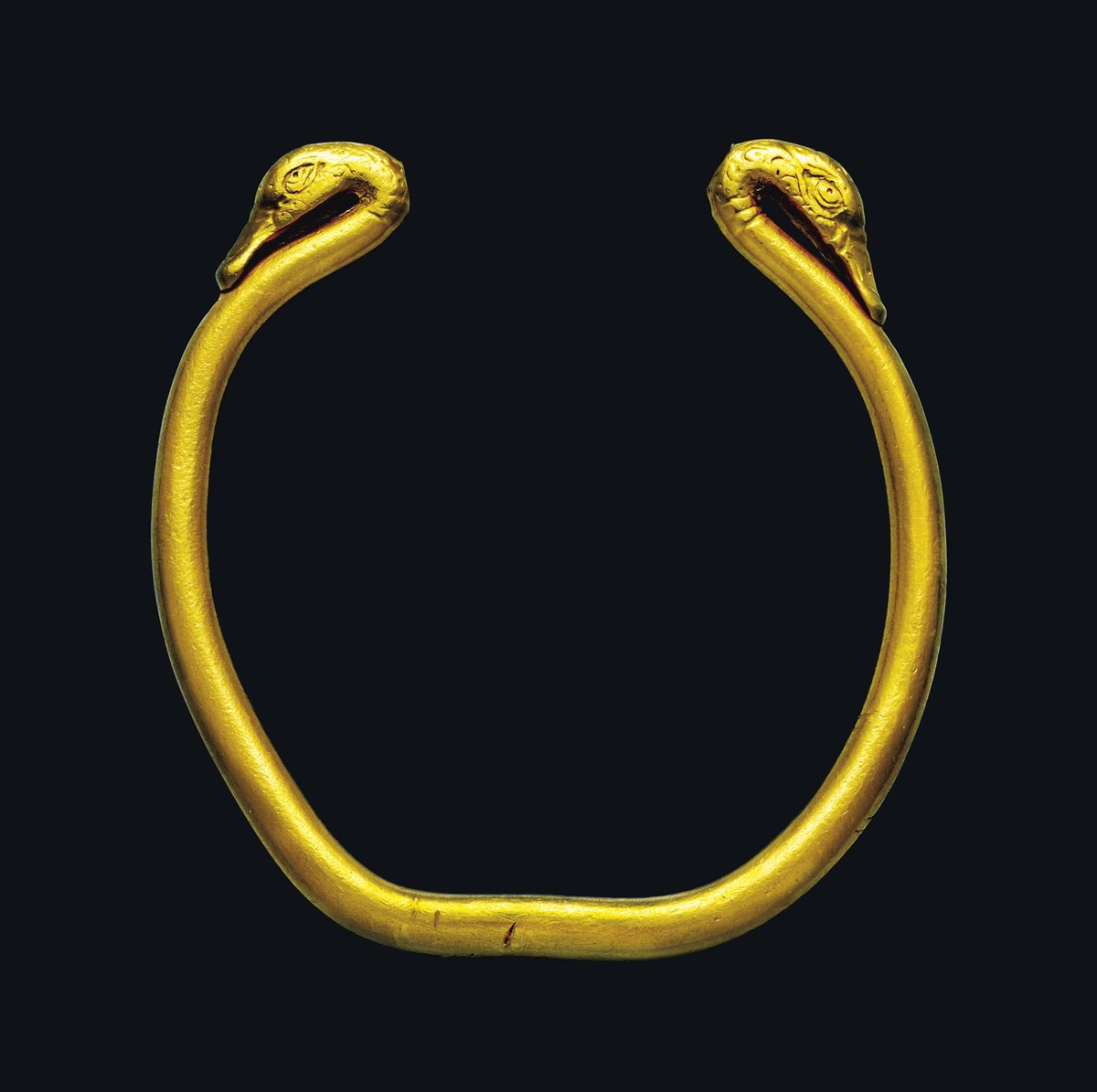
Look at these 10/10 extremely good bois
THREAD about birb in Iranian art 🦆🦚🐓🦅🐣
~ NA @eranudturan #HistoryofIran
patreon.com/eranudturan

THREAD about birb in Iranian art 🦆🦚🐓🦅🐣
~ NA @eranudturan #HistoryofIran
patreon.com/eranudturan


You’ll notice that #ducks are REALLY common in #Sogdian art, appearing primarily in #textile (there’s also a wooden painted panel from Kucha). They almost always hold a necklace in their beaks
~ NA @eranudturan #Historyofiran



~ NA @eranudturan #Historyofiran




They sometimes appear in conjunction with pheasants, who often wear a necklace around their necks.
What’s this motif all about?
~ NA #HistoryofIran

What’s this motif all about?
~ NA #HistoryofIran


The whole thing links back to “Farr,” a concept loosely translated as “Glory” “Divine Glory” and a super important concept if you wanted to be anyone of any importance. “Farr” also appears as an element in Sogdian names, such as “Kawifarn”. ~NA
The necklace key, even though it’s often omitted.
Most depictions have a 3-pendant necklace, with 3 pearls. Pearls were one embodiment of Farr, kept safe underwater by the deity Apam Napat.
3 stood for the three stars making up the deity Tishtrya: Sirius, Betelgeuse, & Procyon.



Most depictions have a 3-pendant necklace, with 3 pearls. Pearls were one embodiment of Farr, kept safe underwater by the deity Apam Napat.
3 stood for the three stars making up the deity Tishtrya: Sirius, Betelgeuse, & Procyon.




The Vareghna bird, often depicted as an eagle, delivered the Farr to Apam Napat.
The Chamrosh bird retrieves it from the waters and delivers it to the heavens.
A duck became the aquatic incarnation of Chamrosh, and a pheasant, with its coloured plumage, the aerial incarnation.


The Chamrosh bird retrieves it from the waters and delivers it to the heavens.
A duck became the aquatic incarnation of Chamrosh, and a pheasant, with its coloured plumage, the aerial incarnation.



The #duck was so important as a symbol for / carrier of Farr that it adorns the tunic worn by Varkhuman at Afrasiyab. He is literally wearing his Divine Glory on him
It even survived the Arab invasion - here it is on an Arab-Sasanian coin from Istakhr, late 7th/early 8th C
~NA

It even survived the Arab invasion - here it is on an Arab-Sasanian coin from Istakhr, late 7th/early 8th C
~NA


This isn’t limited to early medieval era. Here are some #Achaemenid #Persian bracelets with ducks, and #Sasanian stucco. 🦆🦆🦆 ~NA @eranudturan #HistoryofIran 





To be fair, it’s pretty easy to fall in love with these 10/10 extremely good bois ~NA @eranudturan
Another important birb is Vareghna, who carries (but is not a symbol of) Farr. It is often shown as a falcon or a raven.
We see what might be Vareghna from Achaemenid times ...
We see what might be Vareghna from Achaemenid times ...

... through into #Arsacid coins, where a bird carries an investiture ring to the King, and in #Sasanian coins, where the King’s crown contains bird symbolism. These coins of Shapur I and Hormizd II show the Vareghna holding a pearl of Farr ~NA 







The symbol, although not necessarily its meaning, made its way to the steppes where it is even incorporated into the crown of the Gokturk Khaghan Bilge Khaghan! ~NA 

• • •
Missing some Tweet in this thread? You can try to
force a refresh




